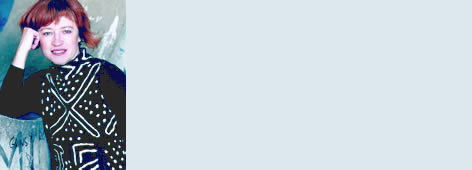|
|



EUROKAZ 2004
It is as it is, back at the beginning: we
must again confirm Eurokaz's direction,
its place and significance. This
year we look back on some companies that have been important to
us, as well as being some of the leading theatre companies in Europe
today. We can say that the vertiginous continuation of their strong
ideas has been a journey that started at our festival. Eurokaz
was
among the first to recognize them in the past and consistently
promoted them beyond an often disinterested or frowning mediocrity.
The companies La Fura dels Baus and Societas
Raffaello Sanzio are
exemplary of this artistic phenomenon which shook European theatre
and reached to its highest levels without reducing an uncompromising
radicalism, all the while maturely operating impressively diverse
stage mechanisms, technology and production standards.
With its cycle Tragedia Endogonidia produced as eleven episodes
across ten European cities, Soc. Raffaello Sanzio dismantles one
of the
basic issues of contemporary culture: a crisis of tragic consciousness
that employs an impressively grand stylistic and organisational
format.
La Fura dels Baus' artistic nucleus,
after specializing in different celebratory events like the 1992
Olympics opening or other similar
events, entertains today by producing operas at prestigious festivals
such as in Salzburg, yet without falling behind on the continuation
of their radical discourse of inquiry. XXX is a show of decisive
political and social demands. It can be recoded and read as an
excuse for interactive pseudo-porno-graphic play in which the
audience, by its own choice, follows by convenience the challenges
of de
Sade
and La Fura dels Baus.
An interactive relationship with the audience is the core of the
piece by German choreographer Felix Ruckert. The audience, blindfolded,
passes through three levels of seduction and gives way to direct
manipulation by company members, becoming performers who decide
on their own degree of inner pleasure.
Also, in the show by the Slovenian company Via
Negativa, the audience
will be interactively engaged: the group determines each of the
performers' schedule and quality of food consumption which, in
the best tradition
of Greenaway and Bunuel, creates a brilliant scenic comment on
the nutritionist schizophrenia of modern society. The other two
works
by Via Negativa speak with
a freshness unusual for Slovenian theatre which appeared after
many years of crises as an epigone relation
to a Western European new theatre mainstream (especially dance).
The show by Chicago-based company Lucky
Pierre sets up a negative
interactivity: the audience is held in expectation all the time
and the show relies on their consumerist impatience. It's a show
about
spending time; on an iconoclastic border of noble dilettantism
and the impulses formulated by fellow Chicago performance group
Goat
Island; the show gives witness to an active North American performance
scene that, not without a certain irony, tries to free itself
from its most recent theoretical suffocations.
The French Compagnie 111 continues our theme of new circus that
was enthusiastically accepted last year. As in the Australian shows
we
saw then, the word circus for 111 can be used conditionally; although
performers demonstrate a perfect command of acrobat and circus
skills, the show on its own is structured as a condensed reverie
that lets
itself free from being determined by genre.
Kim Itoh, often compared to another Eurokazís acquaintance from
the past - Saburo Teshigawara, is a true star of contemporary Japanese
performance: a leading figure of Japanese post-butoh generation
who
finds surprising production effects in a schizo-active relation
towards traditional definitions.
And finally, it was about time a polite encounter took place between
Eurokaz and Zagreb's Academy of Drama
Arts. In the last few years,
shy steps towards reconsidering the future of Croatian theatre
have been made at the Academy, and Eurokaz cares mostly about
that future.
Discussions, lectures, encounters will possibly reveal an over-emphasised
neurosis and an epidemic of iconoclastic solutions in the works
by Academy students, but also a desire of professors for a looser
application
of traditional didactic tasks.
Gordana Vnuk
|
|


